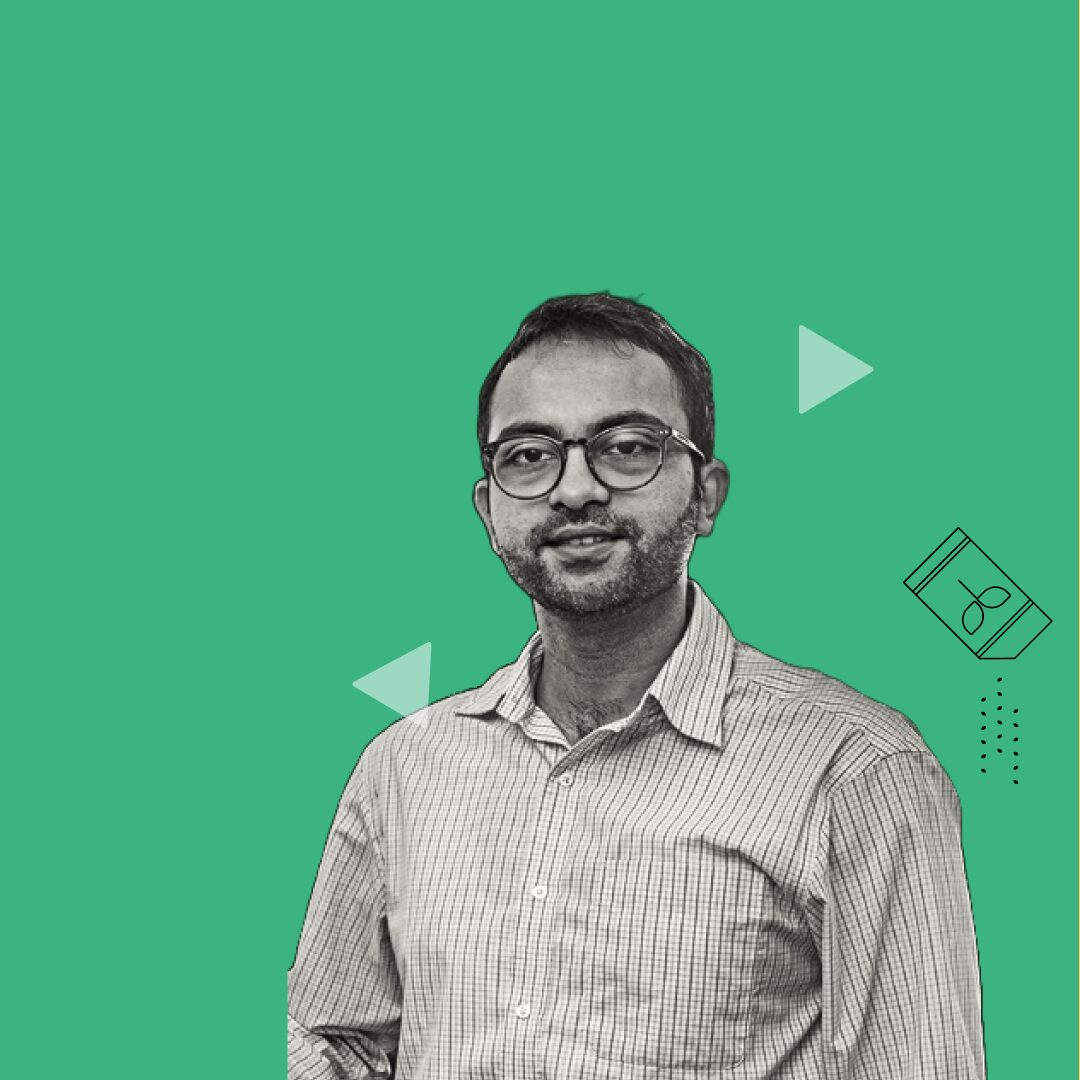In the heart of rural India, where agriculture is the backbone of the economy, one startup is changing the way farmers access technology, resources, and markets.
DeHaat is a full stack agritech platform that acts as a one-stop, 360 degree solution for Indian farmers. Born out of the vision of Shashank Kumar and his co-founders in 2012, they saw an opportunity to bridge the gap between rural farming communities and the rapidly advancing tech-driven world. Whichever crop they grow, farmers get access to everything they need under one roof.
Last year, DeHaat was working with over 3 million farmers in the region, but following its recent acquisition of farm advisory platform AgriCentral, the company now reaches over 13 million farmers in India. A huge milestone for Shashank and his team in achieving their goal of empowering farmers with the tools to grow and thrive.
We spoke to Shashank to learn more about DeHaat’s journey, how acquisitions have supported his growth strategy and running a successful strong franchise business model.
Let’s start at the very beginning. What were the early days of DeHaat like?
We were winning the hearts of the farmers right from the start. I come from a farming family, and getting close to the farmers – our customers – was one of the highlights in our startup journey. I still call those first 5-6 years the ‘best days’. We were completely disconnected from the world.
Our focus was on remaining close to our customers. And on a day-to-day basis we could see the change and the impact our solution had on their lives. Someone was getting a better price for their produce, while someone else had saved costs while buying seeds. And their income used to grow like 2x or 3x. That was a very strong validation for us and definitely a source of motivation.
What is the problem you are trying to solve and why is it so important?
There are two ways to look at it. There are 500 million smallholder farmers worldwide, contributing around 40-50% of global food production. Which is extremely important for all of us. But how would you react when you hear that these farmers, who are feeding us, are starving because they are not getting optimum return from agriculture? So, one aspect is by giving the farmers a full stack platform, we are helping them to earn more and to live a better life.
The other aspect of our work is bringing complete efficiency and transparency in the food value chain. This isn’t just a farmer problem—it’s a global issue. Food security affects us all.
When fundraising, how did you know your investors were the right fit?
It was crucial that our investors understood the expectations we set in our pitch from the start. Agritech isn’t a sector where you can expect 10x growth every year, but it’s one where steady 30-40% growth is possible for the next 25-30 years. So they needed to understand the long game.
Beyond capital, I wanted investors who could add real value. What can they help with beyond just funding? That’s where the real work begins—post-closing. But here’s the thing: it’s up to the founder to unlock that value. Investors and VCs have dozens, sometimes hundreds, of companies in their portfolios. They won’t be thinking about you 24/7. But if you reach out with a specific ask, they never say no.
For example, I asked Galina to connect me with two large retail chains our team had struggled to approach. Within a week, she made it happen – setting up a call with their management teams, and we got them onboard. It’s not just her or RTP; when I reach out for a specific thing, my investors can do it.
Let’s talk about the complexities of building a company in agriculture. A lot of factors are out of your control – climate logistics, political unrest and so on. How do you navigate the uncertainty that comes with the agriculture sector?
We rely on a data-driven approach. By collecting vast amounts of data, we’ve built a platform that brings predictability to the unpredictable. This allows us to create models for yield predictions and identify farmers’ needs ahead of time.
We also stay ahead by predicting harvests even while crops are still growing, and secure potential buyers in advance.
Finally, we eliminate the intermediaries and bring the multi-billion dollar agri businesses and the millions of farmers closer to each other. By using data to matchmake supply with demand, we give farmers more control—right from the crop planning stage—by factoring in weather and soil patterns. That’s how basically we mitigate the risk right at the crop planning stage itself. It’s all demand-led, data-driven, and streamlined. That’s how we gain better control over the supply chain, reduce risk and ensure efficiency.
It’s a super complex market, how do you know where to focus and how do you stay focused?
Yes it’s super complex – to the extent that nobody has ever built a foolproof model so far. Focus is extremely important. For us, that means zeroing in on a specific geography (say, a 150-200 km radius or a certain set of locations), onboarding farmers in that specific geo, and perfecting our model there first.
That geographical expansion is a function of time and it happens in phases. We replicate our platform into that geography with the entire array of value chain services – advisory, financial help, and more – then use the results, both successes and failures, to refine the platform. Every region is different, but that’s how we learn and get better.
The good part? Over time, we’ve made the platform more accurate. Now, we’re scaling to 126,000 villages across 11 states, impacting 3 million farmers. And in four months, we’ll start replicating this in Southern India.
You set up the Modern DeHaat Centers to reach farmers and this follows a franchise model. What are the benefits of this business model and how do you build trust with your franchisees?
The DeHaat franchise model is simple and farmer-first. We provide everything farmers need year-round – seeds, advice, financing, insurance – under one roof. No more juggling different channels for each service. It’s a complete, crop-agnostic solution that builds real partnerships with the farmers.
They don’t just see us as a service provider—they see us as a long-term ally, supporting them across every crop and season. Our revenue model is clear: while we don’t charge for advisory, we earn when farmers sell their crops. So our success aligns with theirs, making us invested in their outcomes.
And the farmers have full control. They choose which seeds to buy, what to grow, and where to sell. This level of autonomy and transparency builds trust – they know we’re here to help, not push. As we also offer localized crop advice in regional languages, the farmers feel understood and heard and that means trust is built through familiarity.
For our franchisees, the model is a game-changer. They’re local micro-entrepreneurs who manage the physical centers, with no supply chain hassle. We handle that. They distribute inputs, aggregate crops, and earn steady, predictable income every month.
Of course, our franchise model does rely on the capability of each franchisee. And not every franchisee performs as expected, but over time we’ve mitigated this risk through digitization. Each franchisee operates through our business app that handles everything – registration, onboarding processes, ledger, payments, you name it. They also get continuous growth opportunities and new revenue opportunities from new services like insurance, for example
However, it’s not a purely digital experience. For every 25-35 franchisees, we have a dedicated relationship manager who regularly visits the centers to monitor progress and offer support.
We are 100% dependent upon the franchisee and it’s a relationship; both between DeHaat and the franchisee but also the franchisee and the farmers. They’re often from the same community as the farmers they serve, which fosters trust. The relationship with the franchisee is crucial to making everything work smoothly.
And you recently acquired AgriCentral to further extend DeHaat’s reach. What benefits does this bring and how have acquisitions contributed to DeHaat’s growth strategy?
Well that’s a good segue from the previous question because AgriCentral is a digital platform with a base of 10 million farmers. Can you believe it? This boosts our total reach to 13 million – around 15% of India’s farmers. This acquisition gives us direct access to farmers through a robust digital platform, making engagement more efficient and customized.
Acquisitions play a critical role in our growth. For instance, while we had built a strong backend for sourcing high-quality, traceable produce, we lacked experience on the export front. So, we acquired companies in both the fruit and vegetable segments. In just 2-3 years, we’re now exporting farm produce like bananas, grapes, vegetables, spices, and rice to 32 countries. This export arm has grown to nearly $90 million or 18% of our total business.
These acquisitions are key to DeHaat’s larger goal: bringing everything agri-related under one roof. Not only does it help farmers earn more, but it also creates a more efficient, transparent supply chain for the entire industry.
Most M&A stories don’t succeed, but DeHaat has defied that trend. What’s the key to your successful acquisitions?
It’s true; I think about 80% of M&As fail. For us, the key has been keeping acquisitions on a smaller, more manageable scale – none larger than $15 million. This way, even if an acquisition doesn’t work out, the impact is contained.
We’ve been fortunate, though. Out of 7 acquisitions, only 2 didn’t go as planned, but we learned from those setbacks and applied those lessons moving forward.
One key factor in our success is retaining the people who built the acquired companies. Every company has its own DNA, and in agriculture, the talent has a very core skill set which is crucial. We don’t try to change that; instead, we integrate them into our larger hub, preserving what made them successful in the first place. That would be my advice to others!
And finally, what’s the vision for the next five years?
So, in the next five years we aim to reach 25 million farmers in India, doubling what we can today. I also see our business growing to somewhere around $1.5-2 billion annually and expanding beyond India.
A big focus will be introducing new, data-driven offerings for rural farmers. Rural India is undergoing a digital transformation, and we see huge opportunities to roll out services like insurance, soil testing, mechanization, and pay-per-use solutions.
And looking further ahead, maybe in the next 10 years, we’ll aim for an IPO in the Indian market. This would be the largest ever agri IPO in the history of India.
Watch this space!

